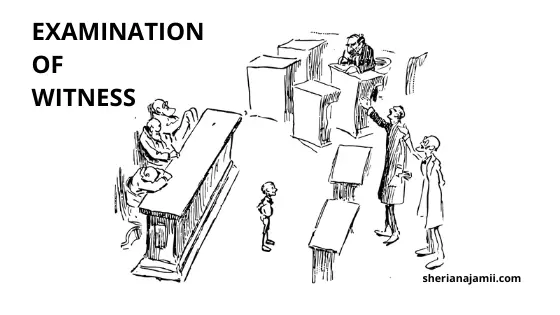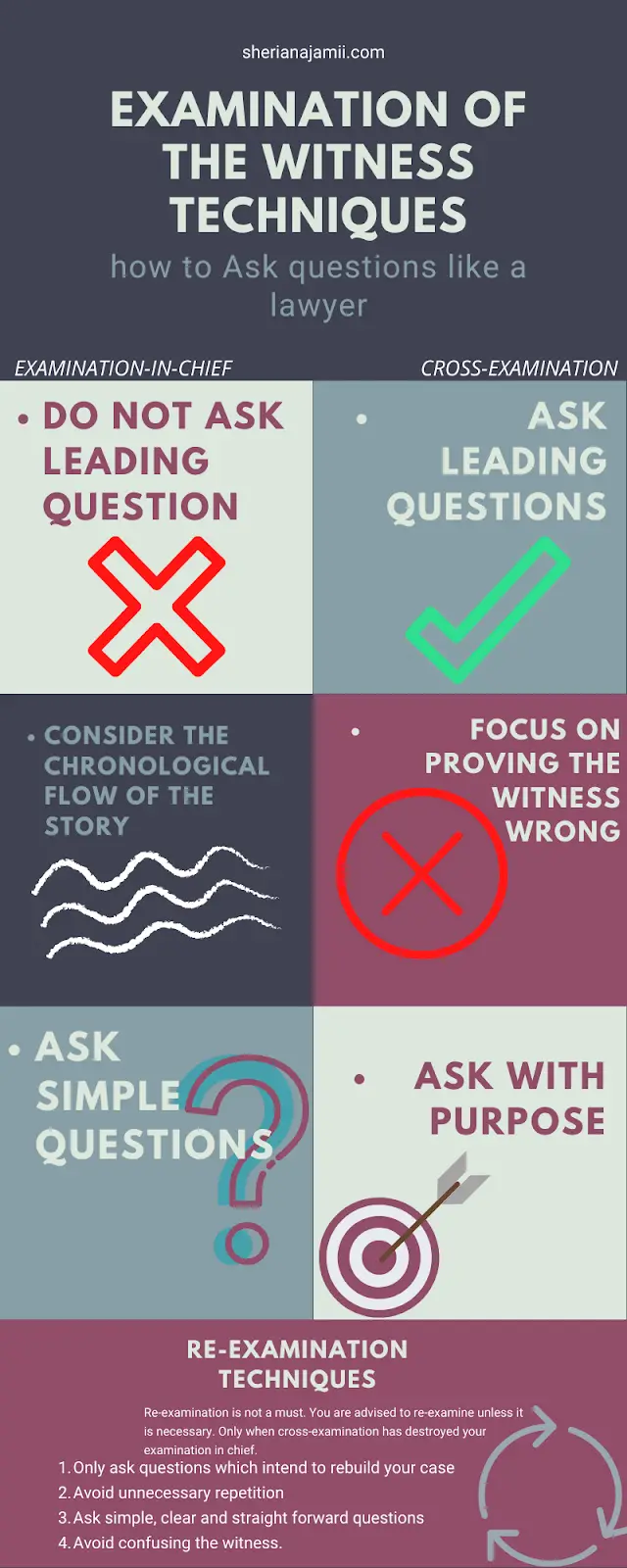
Ready to Master the Art of Persuasive Communication? Unlock Your Success Today!

This is a definitive guide to the examination of witnesses
In this guide, you will learn;
Let’s get started
Jump to section
Transform Your Communication, Elevate Your Career!
Ready to take your professional communication skills to new heights? Dive into the world of persuasive business correspondence with my latest book, “From Pen to Profit: The Ultimate Guide to Crafting Persuasive Business Correspondence.”

What You’ll Gain:
The examination of witnesses is the process of obtaining evidence from the witness during the hearing of the case.
This process involves asking questions and leading the witness to adduce articles or documents as evidence before the court.
The techniques in the examination of witnesses hinge on how to frame/phrase your questions and how to lead the witness to properly adduce his evidence.
Before the examination of any witness
In choosing witnesses you have to put into consideration the following attribute of a good witness;
There are three types of Examination of witnesses namely examination in chief, cross-examination, and re-examination.

Examination in chief refers to the examination of the witness by the person who called that witness.
For example, when you have been called by the republic to give evidence in any criminal case, the question that you will be asked by the state attorney or public prosecutor is an examination in chief.
The purpose of examination in chief is to enable the person calling the witness to extract from his witness, subject to rules of evidence and procedure everything that the witness knows about the case so as he can build his case.
The following is how to conduct the examination in chief
Leading questions refer to the questions which suggest answers.
Examples of leading questions are, You were at home or at the scene of the crime on 1st July? or Did you see the accused person stole the computer at the office?
During examination in chief, leading questions are forbidden to assess the credibility of the witness.
Leading questions should not be used on direct examination except as necessary to develop the witness’s testimony.
Federal Rules of Evidence–Rule 611
However, you may ask leading questions in the introductory matter and undisputed facts.
Otherwise, instead of leading questions, you should ask questions like who, what, where, when, and how which allows the witness to tell the story naturally.
For example, Where were you on the 1st of July or What did you see at the office?
Simple questions attract simple answers which avoid complications for the witness side.
Many witnesses are afraid of court.
Simple questions will make the witness comfortable and will let the witness remember the answers.
Let the witness tell what he knows without interruption. Give him/her enough time to think about answers and arrange his sentences.
The flow of the story is essential when it’s come to evidence. Guide the witness to tell the story in the chronological flow of the events.
When asking you questions observe the flow of events.
Guide the witness to tell the material facts of the case logically.
Let the witness be your friend.
Ask questions in a friendly manner and when the witnesses ask you to repeat do so in a helpful way.
Ask a witness if he wishes to adduce any document or article in his possession as evidence.
You must lead the witness to tender the document or any article in his possession to court.
When the witness is ready to tender the document, make sure you ask relevant questions regarding that document.
For example, if it is a medical report, you may ask the questions like, who prepared the report, what the report contains, etc.
Cross-examination is an examination of a witness by the opposite party after examination in chief.
For example, when you have been called by the republic to give evidence in any criminal case, the questions that you will be asked by a state attorney or public prosecutor is an examination in chief and the question that will be asked by the accused person or his advocate is a cross-examination.
The purpose of cross-examination is to discredit the evidence adduced during the examination in chief.
To destroy your opponent’s case and build yours. To show that the witness is not reliable, he is a biased or outright liar.
The following are the tips on how to conduct cross-examination of witness witness
Unlike in examination in chief where leading questions are forbidden, in cross-examination, the leading question is allowed.
Ask a leading question to test the truthfulness of the facts.
Your questions should be tight and limited to one fact per question.
Ask a small piece of the question with a major purpose.
In cross-examination don’t ask a question that you don’t know its answer and don’t ask without purpose.
Eye contact can make you detect if the witness is lying.
body language can help you determine the strengths and weaknesses of the witness. is the witness tremble?
In cross-examination witness is not your friend, your goal is to prove him wrong on key facts stated in his examination in chief.
Make sure you attack essential facts of the case including documents or any article adduced as evidence.
It is not necessary to ask too many questions to archive this. Sometimes one or two questions might be enough.
Technically that is referred to as the principles of primacy and recency.
By starting strong and finishing strong you will make your cross-examination more memorable.
Re-examination is the examination of the witness by the person who called that witness for the purpose of rebuilding what has been destroyed in cross-examination.
Re-examination is not a must.
You are advised to re-examine unless it is necessary.
Only when cross-examination has destroyed your examination in chief.
The object of re-examination is to allow reconciling the discrepancies if any, between the statement in examination in chief and cross-examination or to explain any statement inadvertently made in cross-examination or remove any ambiguity in the deposition or suspicion cast on the evidence by cross-examination.
NB. During the examination of the witness makes sure you record everything for ease of reference.